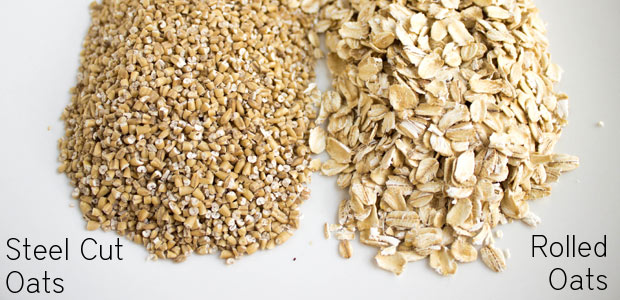All oats for consumption have been stripped of their hard outer hulls, but retain the protective inner bran layer - its inherent healthy nutritives and fiber intact. However, oats can also contain antinutrients.
Possible antinutrients in oats:
- Phytic Acid. Oats have substantial phytic acid content - but low phytase enzyme content;
To break down phytic acid - All forms of oats require soaking for 12-24 hours with extra phytase enzymes added
- Lectin (Agglutinin). Oats typically have LOW agglutinin levels, provided they have not been cross-contaminated with wheat, barley or rye;
- Gluten / Gliadin (Prolamin). Pure/uncontaminated oats are pretty much gluten free, just ensure they come from a certified gluten-free (non-contaminated) source
Oats can become cross-contaminated with other grains. Because of this issue, some products are labelled specifically as "pure" oats.
- Oats are often grown near fields or in crop rotation with wheat, barley and rye. These grains contain lectins - such as gliadin (the troublesome component of gluten) or agglutinins.
- Packaging plants can mix other grains in with the oats
And you thought that oats were just oats! :) Really though - the difference between the forms is simply in the level of processing.
No matter the level of processing, all oat forms have a similar nutritional profile;

Oat groats. Nutty flavor, chewy texture;
Steel-cut / Irish oats. Oat groats have been chopped into 2 or 3 pieces; nutty flavor; rank lower than rolled oats on the glycemic index , because it takes longer for digestive enzymes to reach and break down the starch in thicker pieces, slowing down its conversion to sugar; these oats have been heat-treated to about 110°F to prevent rancidity of polyunsaturated fatty acids;
Oat flour (ground whole oat). Contains the antinutrient phytic acid and so should be properly prepared
Rolled "Old Fashioned" oats. Steamed to soften and prevent rancidity (partially cooked at 200°F for 4-5 hours; polyunsaturated acids can otherwise go rancid within 3 months; even Scottish ), then put through mechanical rollers to flatten them into flakes; this increases surface area for a quicker soaking/cooking time than groats or steel-cut oats. Can be used in baked goods.
Quick rolled oats. Same steaming / rolling as rolled oats, only more of it and rolled thinner; more fragmented than rolled oats - creamier and less chewy; even shorter soaking/cooking time;
Instant oats. Steamed longer than quick oats, so precooked, rolled even thinner and then dehydrated; no cooking required, just rehydrate; often put in ready-to-use packets along with lots of sugar and artificial flavorings and mystery ingredients.
Oatmeal powder. Sometimes used as baby food
Oats have a higher fat content than most grains and so tend to go rancid faster - Buy in small quantities and store in the fridge.
Soak the oats before cooking them to reduce phytic acid content:
Add to the pan you'll use for cooking the oatmeal:
Leave 12-24 hours
Add 1 cup of water (and I usually add some anti-inflammatory cinnamon )
Bring to a boil and cook for a few minutes to desired consistency (leave a bit soupy if you're going to top with flaxseed - it will absorb the liquid).
Serve with milk and/or fresh cream (Optionally add berries, banana, pecans, walnuts, maple syrup, a Tbsp of ground flax seed for some helpful hormonal balancing and Omega-3)
Phytate content of oat seeds decreased 79% during germination. From 0.35% 0.11%, assumed due to an increase in phytase activity as germination progressed. germinated (malted) porridge significantly increased iron and zinc uptake in humans. Processing oats, 2015
According to Sarah Pope MGA of The Healthy Home Economist:
"The Archaeological Institute of America has recently reported the surprising results of tests conducted by scientists at the University of Florence. The tests involved a stone pestle recovered in the Apulia region of Southern Italy.
Apulia is home to the archaeological site knows as the Paglicci Cave that was used by Paleolithic hunter-gatherers of the Gravettian culture between 32,000 and 34,000 years ago. These stone age humans painted murals on cave walls and engraved images of goats, cows, a serpent, and a nest with eggs. They also painted hunting scenes on bones.
The stone pestle was originally discovered in the cave back in the 1950s, but tests have only now revealed the composition of the stone'sstarchy debris.
The tests revealed that the stone pestle had been used to grind none other than dried oats! The oats were first gathered and then heated which likely served as a primitive form of food preservation in the cool, damp climate. The heating also helped to dry out the oats, making them easier to grind.
Researchers suggest that the oat powder that resulted from the grinding process was boiled into a porridge-like gruel or even made into bread."
Processing Oats and Bioactive Components, Apollinaire Tsopmo, in Processing and Impact on Active Components in Food, 2015